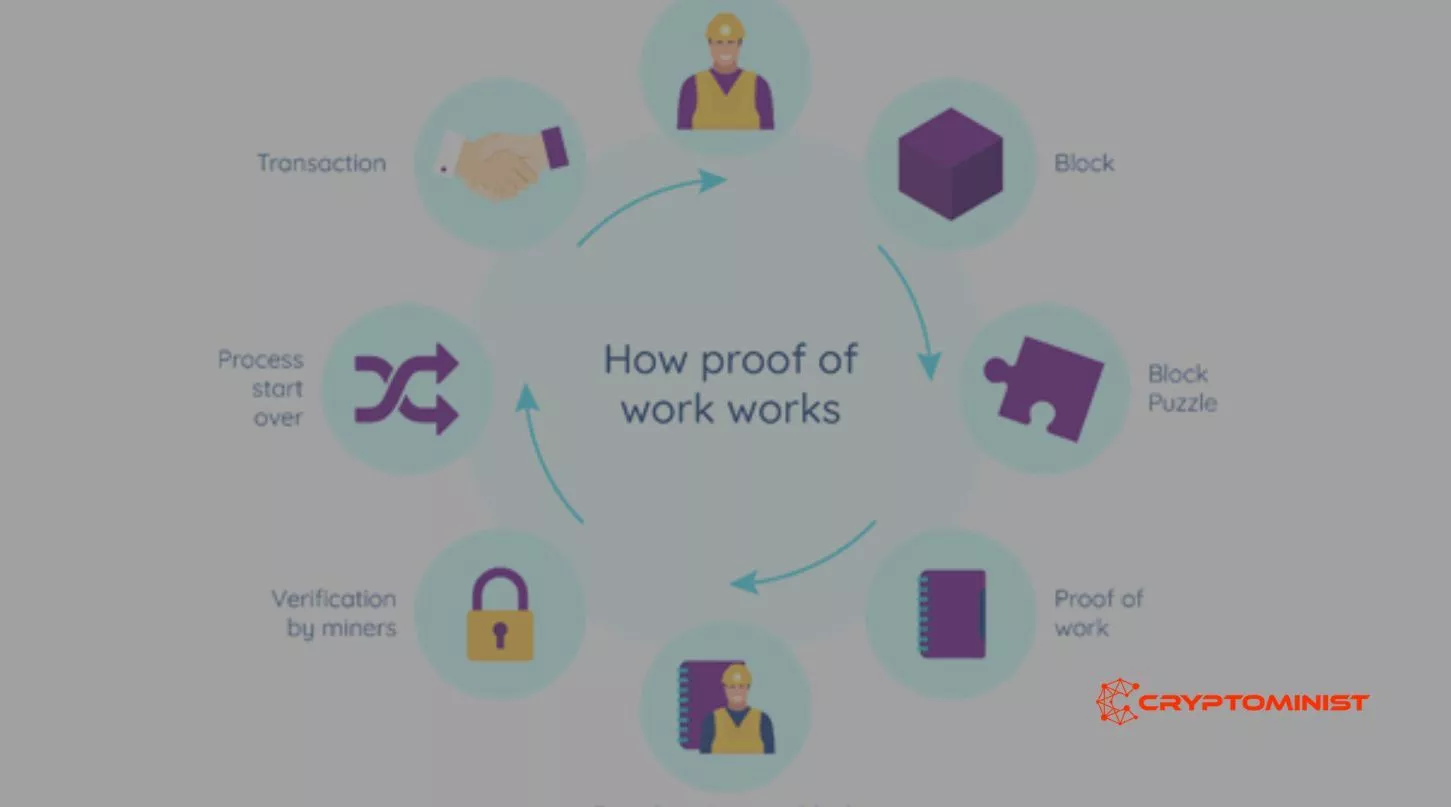Cryptocurrencies rely on a high level of security to prevent double spending, which is the act of spending the same coins more than once. This security is primarily ensured by a consensus algorithm called Proof of Work (PoW).
PoW is used by several cryptocurrencies, including Bitcoin, Ethereum, Dogecoin, Litecoin, and others (though Ethereum is transitioning to a different algorithm called Proof of Stake). Here’s how PoW works and why it’s important:
How Proof of Work Works?

- Conversion of Electrical Energy: PoW involves the conversion of electrical energy into computational “work” on the blockchain. This work is performed by miners using specialized computer hardware.
- Mathematical Calculation: Miners solve a complex mathematical calculation that involves a hash function. This calculation generates a unique string of numbers. This process validates transactions and contributes to the creation of new blocks on the blockchain.
- Double Spending Prevention: The validation of transactions ensures that double spending doesn’t occur. Once data is stored on the blockchain, it becomes immutable and secure. It cannot be altered or deleted.
What is Miners’ Role in PoW?
Miners play a critical role in the PoW process. They run specialized machinery designed to solve the mathematical calculation as quickly as possible. In return, they are rewarded with newly created cryptocurrency coins. The miner who creates the longest chain of validated blocks gets the block reward and transaction fees contained in the block.
Why Proof of Work is Needed?
Proof of Work is crucial for several reasons:
- Double Spending Prevention: It prevents double-spending in digital asset networks, ensuring the security of transactions.
- Security: PoW enhances the overall security of the network.
- Decentralization: In cryptocurrencies like Bitcoin, there is no central authority. PoW replaces this central authority and maintains the blockchain.
- Adding Value: The energy and computational power invested in PoW contribute to the cryptocurrency’s value, increasing confidence among investors.
Advantages and Disadvantages of Proof of Work
Here are the advantages and disadvantages of Proof of Work:
|
PoW Advantages |
PoW Disadvantages |
| Security: PoW helps maintain network security. | Energy Consumption: PoW requires substantial computational power, leading to significant electricity consumption, which can be environmentally unsustainable. |
| Double Spending Prevention: It ensures that each unit of cryptocurrency is spent only once. | Performance: PoW networks often have lower transaction processing capacity compared to alternatives. |
| Value Addition: The computational work and energy expenditure add value to the cryptocurrency. | High Entry Barrier: Getting involved in mining requires expensive equipment, ongoing maintenance, and electricity costs. |
| Decentralization: PoW is a vital part of the decentralized authority system. | Risk of Centralization: There is a risk that miners might collude to attack the network, undermining its decentralized nature. |
Cryptocurrencies Using Proof of Work
Many cryptocurrencies use PoW as their consensus algorithm. Some of them include:
- Bitcoin (BTC)
- Ethereum (ETH) (transitioning to PoS)
- Bitcoin Cash (BCH)
- Litecoin (LTC)
- Monero (XMR)
- Dogecoin (DOGE)
- Ethereum Classic (ETC)
- Bitcoin SV
- Decred
Proof of Work vs. Proof of Stake
Proof of Work has alternatives like Proof of Stake (PoS). PoS uses validators who are selected to create blocks based on the number of coins they hold, rather than competing as miners do. PoS is more energy-efficient but has drawbacks such as the potential hoarding of coins by validators and susceptibility to 51% attacks.
Conclusion
Proof of Work is the original method for securing blockchains and safeguarding cryptocurrencies against double-spending. It remains in use by several major cryptocurrencies, although other consensus algorithms like Proof of Stake are emerging to address its downsides and reduce energy consumption.